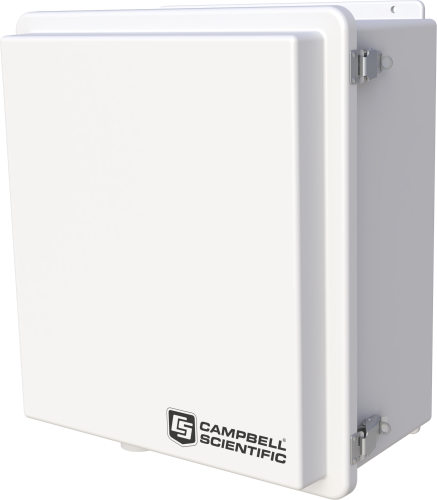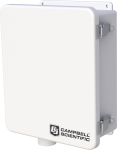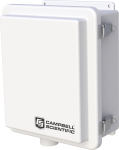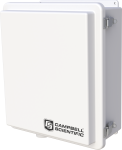
Campbell components mount easily and securely






Overview
The ENC16/18 is a weather-resistant enclosure that is 16 inches wide and 18 inches tall. It can house a datalogger, a power supply, and at least one peripheral. This enclosure is recommended for applications that need to have multiple communication or measurement and control peripherals housed in the same enclosure.
Read MoreBenefits and Features
- Weather resistant to protect instruments
- Two backplate options available so that Campbell Scientific components mount easily and securely (Differs from our other enclosures because you can choose between two backplates.)
- White, UV-stabilized enclosure reflects solar radiation—reducing temperature gradients inside the enclosure without requiring a separate radiation shield
Images

3D/CAD Files:
Technical Description
The ENC16/18's backplate is prepunched with half-inch-on-center holes suitable for attaching a data logger, power supply, and a communications or measurement and control peripheral.
This enclosure is shipped with the 7363 enclosure supply kit that consists of desiccant, a humidity indicator card, cable ties, wire tie tabs, putty, grommets, screws, and PVC coupling. Additionally, Campbell Scientific offers a CS210 Enclosure Humidity Sensor for monitoring relative humidity inside of the enclosure. (See Ordering Info on the web page.)
Compatibility
Please note: The following shows notable compatibility information. It is not a comprehensive list of all compatible products.
Dataloggers
| Product | Compatible | Note |
|---|---|---|
| 21X (retired) | ||
| CR1000 (retired) | ||
| CR10X (retired) | ||
| CR200X (retired) | ||
| CR211X (retired) | ||
| CR216X (retired) | ||
| CR23X (retired) | ||
| CR300 (retired) | ||
| CR3000 (retired) | ||
| CR350 | ||
| CR500 (retired) | ||
| CR5000 (retired) | ||
| CR510 (retired) | ||
| CR6 | ||
| CR800 (retired) | ||
| CR800 (retired) | ||
| CR800 (retired) | ||
| CR800 (retired) | ||
| CR850 (retired) | ||
| CR850 (retired) | ||
| CR850 (retired) | ||
| CR850 (retired) | ||
| CR9000 (retired) | ||
| CR9000X (retired) |
Additional Compatibility Information
The -VC cable opening option is required to fit a BP84 84-Ahr power supply in the ENC16/18 (see Ordering Info).
Specifications
| Color | White (Reflects solar radiation, reducing temperature gradients inside the enclosure without using a separate radiation shield.) |
| Construction | Fiberglass-reinforced polyester enclosure with door gasket, external grounding lug, stainless-steel hinge, and lockable hasps |
| Enclosure Classification | NEMA 4X (before being modified for cable entry) |
| Number of Cable-Entry Seals | 2 large, 2 medium, 2 small |
| Dimensions |
|
| Weight | 7.7 kg (17 lb) |
Related Documents
Related FAQs
Number of FAQs related to ENC16/18: 15
Expand AllCollapse All
Case Studies
Introduction The Andes Mountains of Argentina are home to a rich and diverse group of organic......read more
The West Texas Mesonet (WTM) project was initiated by Texas Tech University in 1999 to......read more




